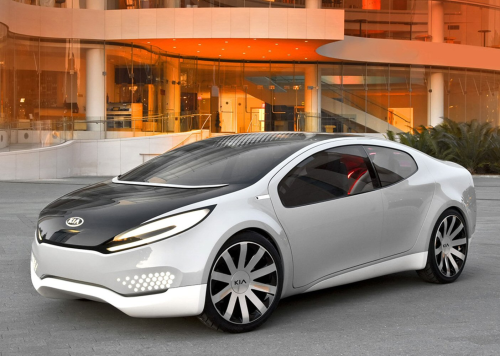
Many see electric and hybrid vehicles as a good route away from dependence on oil and reduced emissions. The 2010 North American International Auto Show, held in Detroit in January, featured some 20 models in an 'Electric Avenue' showcase of electric vehicles and technologies by traditional automakers and independents. Lightweight materials technology is vital to the success of electrics and hybrids to offset the added weight of batteries. But what about storing electrical energy in the composite materials themselves? Not impossible, says Imperial College of London.
Researchers at Imperial and their European partners, including Volvo Corp, have developed a prototype carbon fibre composite material that could change the face of hybrid electric vehicles. The patented material, designed to store and discharge electrical energy, is strong and lightweight enough for vehicle structural components and body panels. The car itself could serve as a battery, the researchers believe. The material is said to be capable of storing and discharging large amounts of energy much faster than conventional batteries. The recharging process involves none of the chemical reactions which cause batteries to degrade over time.
Among the latest of the electrics to debut is the Ray plug-in hybrid concept, unveiled in February at the 2010 Chicago Auto Show by Kia Motors America. The composites-intensive four seat compact sedan demonstrates a configuration from Kia that features lightweight and recycled materials, as well as solar cells embedded in the glass roof panel. The Ray is designed to reach driving distances of more than 50 miles (80.5 km) on battery power and a total range of 746 miles (1200 km) with the all-aluminium gasoline engine.
California car designer Velozzi intends to bring the Velozzi Supercar, a high-performance (0-60 in 3 seconds) electric sports car constructed of carbon fibre and nanotube reinforced composites, to market later this year. A crossover plug-in hybrid vehicle, the Velozzi SOLO, will be available in 2011. The vehicles are the first production cars to be constructed with carbon fibre nanotubes, which are said to significantly increase the mechanical properties and reduce weight of components. Velozzi has teamed with a number of suppliers, including Bayer MaterialScience and Ashland Specialty Chemical Co, in developing the vehicles.
This article is an abstract from the feature Automotive composites offer lighter solutions, which was published in the March/April 2010 issue of Reinforced Plastics magazine. Read the full feature here.





